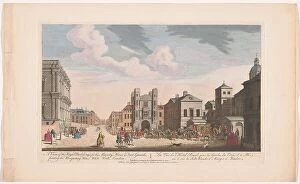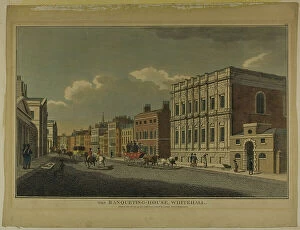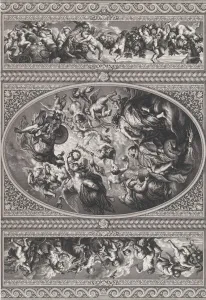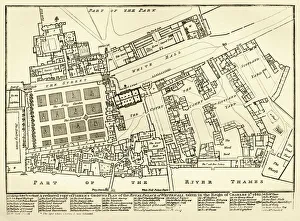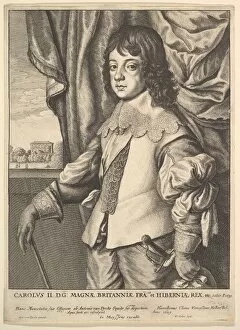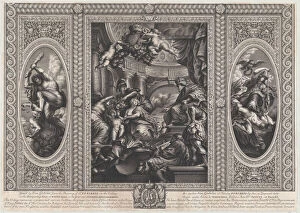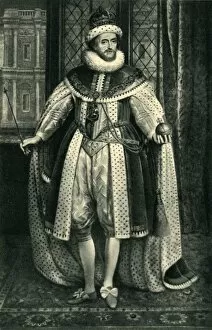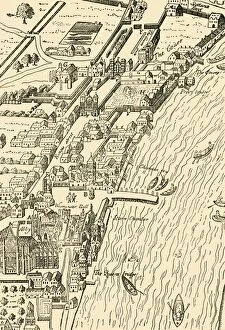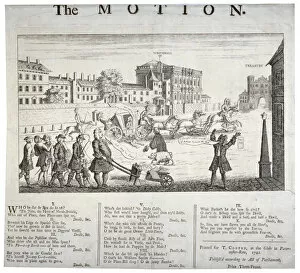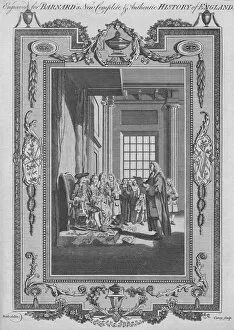Whitehall Palace Collection
"Whitehall Palace: A Glimpse into London's Rich History" Step back in time and immerse yourself in the grandeur of Whitehall Palace
All Professionally Made to Order for Quick Shipping
"Whitehall Palace: A Glimpse into London's Rich History" Step back in time and immerse yourself in the grandeur of Whitehall Palace, a magnificent structure that once stood as a symbol of power and opulence in the heart of London. This panoramic engraving from 1616 offers a breathtaking view of the city, with Whitehall Palace proudly dominating the skyline. At its center, an oval depicts the apotheosis of James I, showcasing his elevated status as king. The palace itself is adorned with friezes featuring charming putti, adding a touch of whimsy to its regal façade. Transporting us further through history is an image from 1881 capturing Old Whitehall Stairs. Though anonymous in origin, this photograph allows us to envision how people would have approached this majestic palace centuries ago. Yet not all moments captured within these pages are ones of celebration. The haunting title page from "Engelandts Memoriael" showcases Joost Hartgerts' depiction of the execution of King Charles I – a somber reminder that even such grand palaces were not immune to political turmoil. Delving deeper into architectural details, we find ourselves studying a plan outlining the layout and design elements that made up the old Royal Palace of Whitehall. Every room and corridor tells tales untold; every wall whispers secrets long forgotten. Engravings and lithographs transport us back to English Renaissance times when Whitehall Palace was at its zenith. These images depict both exterior views and intimate scenes within its walls – including Peter Paul Rubens' portrayal of King James I uniting England and Scotland, symbolizing unity under one crown. Wenceslaus Hollar's portrait captures Charles II during this tumultuous period in 1649 when he ascended to power after his father's execution. His countenance reflects both strength and vulnerability amidst uncertain times. A glimpse across Westminster River reveals Ciuitatis Westmonasteriensis pars, a stunning view of Westminster from afar.



